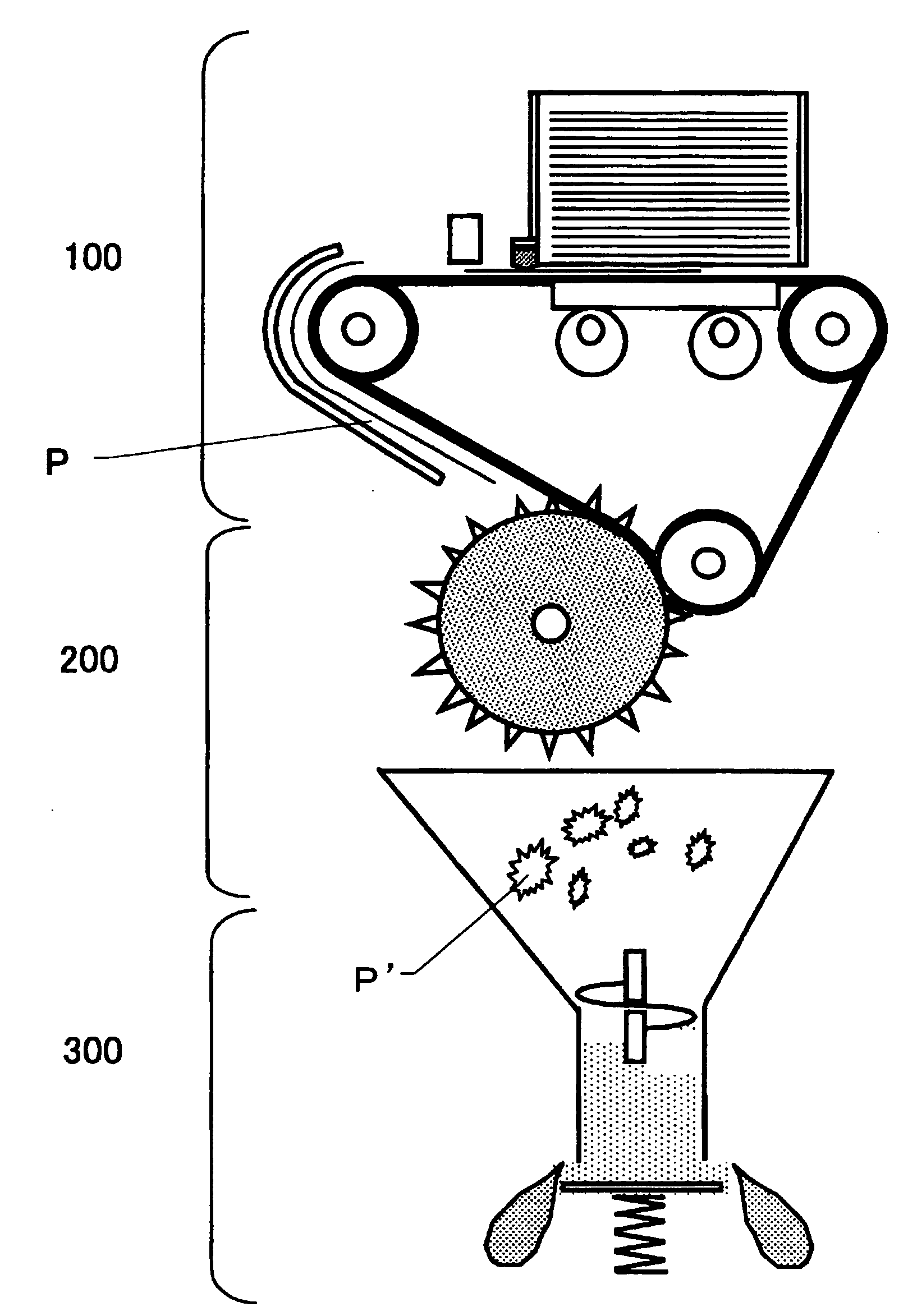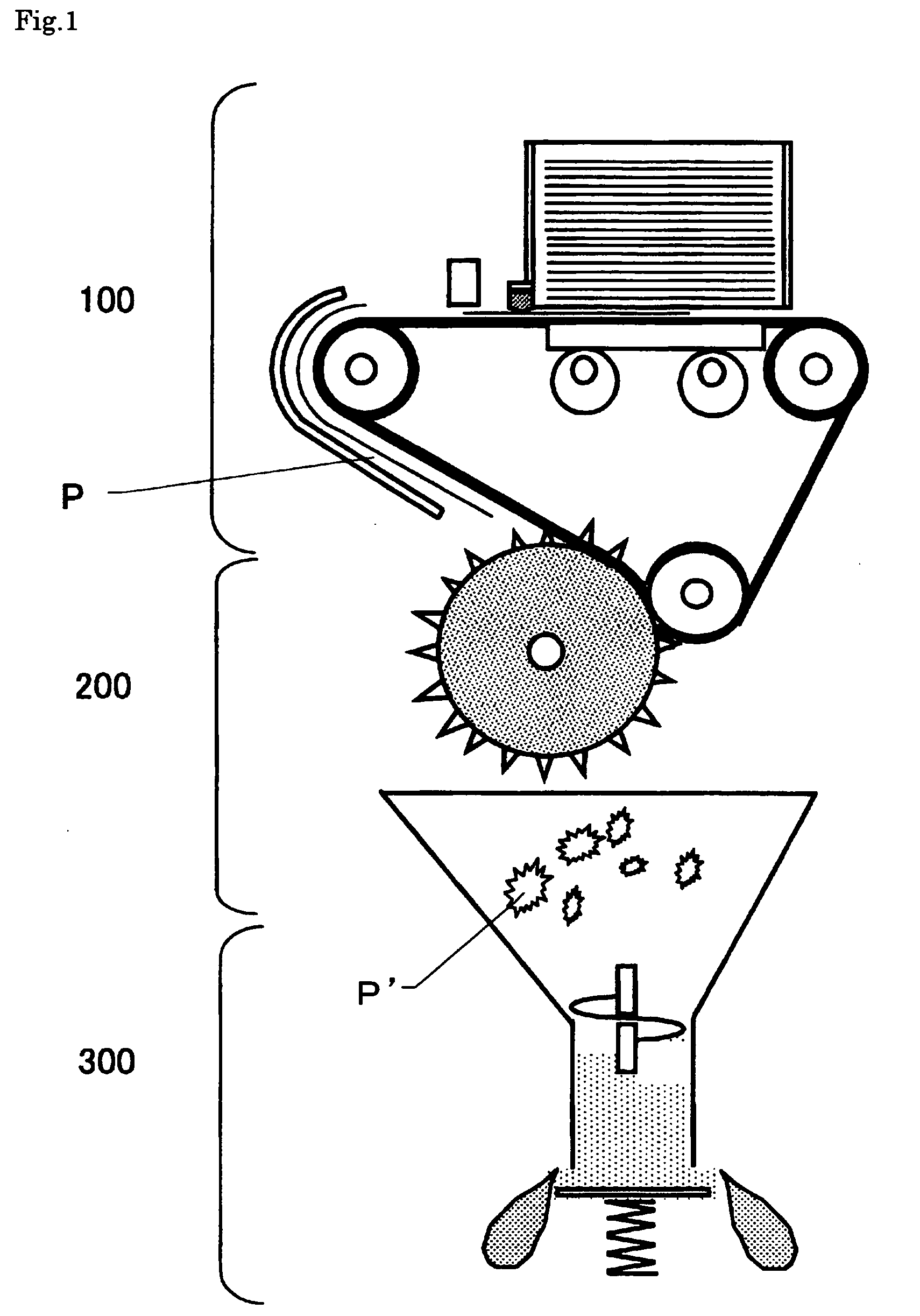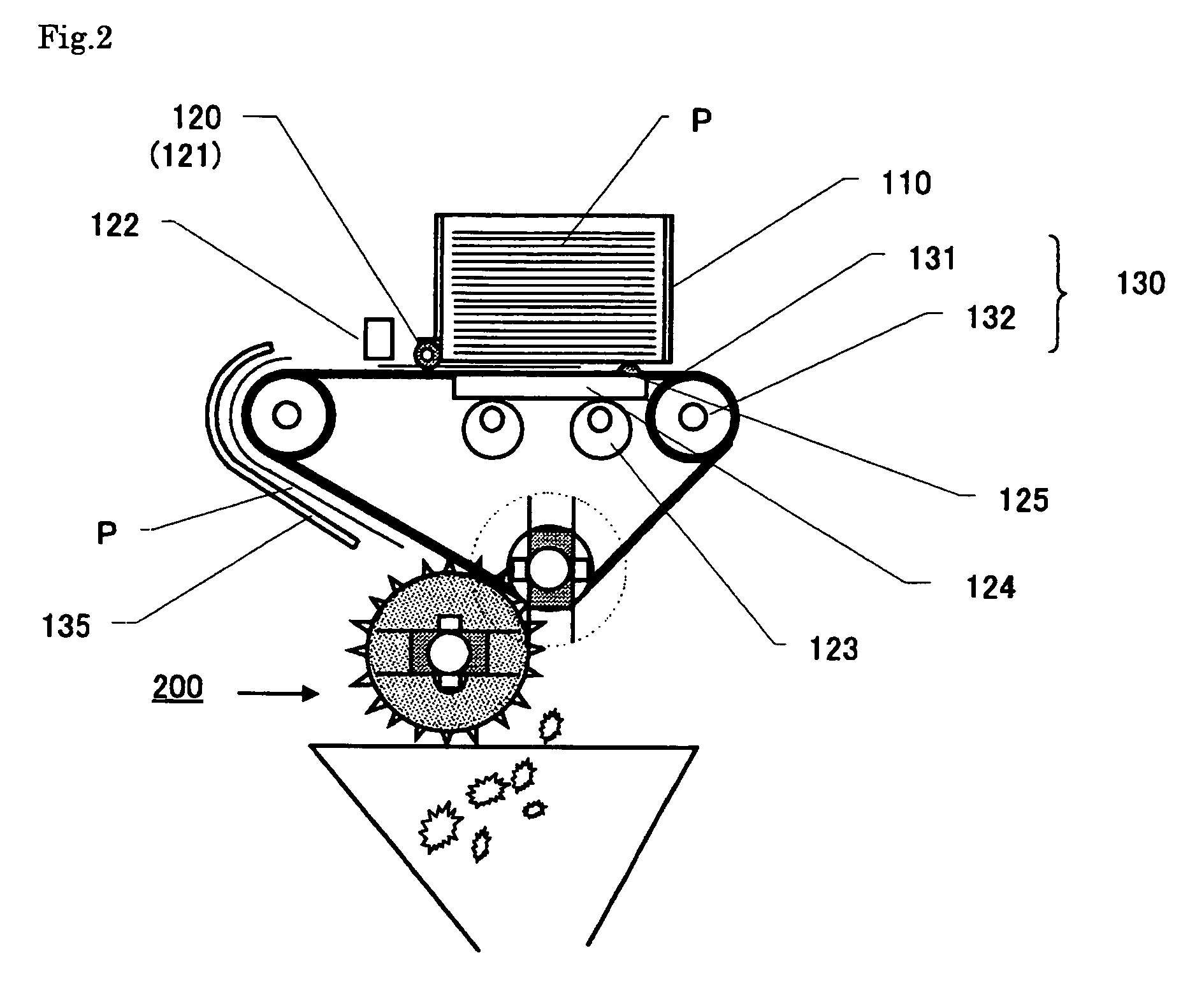Document Shredder Device
a shredder and document technology, applied in the field of document shredders, can solve the problems of limited use as recycled paper, inability to make large speed ratio between the rotating blades, and upsizing the apparatus, so as to reduce the overall apparatus, reduce the speed ratio, and restrict the effect of paper transpor
- Summary
- Abstract
- Description
- Claims
- Application Information
AI Technical Summary
Benefits of technology
Problems solved by technology
Method used
Image
Examples
first example
[0038]FIG. 6 and FIG. 7 each illustrate a first exemplary embodiment of the shredding part that utilizes the belt transport system and pulleys. This shredding part 200 is provided with a transport system 230 made up of pulleys and belts, a mechanism that shreds paper, and a hopper 240 in which the paper after shredded are ejected. The mechanism that shreds the paper is connected to a driving force not illustrated, and provided with a first shaft 210 and a second shaft 220 that respectively rotate in opposite directions, plate-like shredding blade 211 being fixed on the first shaft 210, and plate-like shredding a blade 221 that is fixed on the second shaft 220 and shred (tear) the paper in cooperation with the shredding blade 211.
[0039]The paper transport system of the paper feeder 100 described above may also serve as the transport system 230. In the exemplary embodiment as illustrated, the transport system 230 is made up of three pulleys 232a, 232b, and 232c, the belt 231 that is l...
second example
[0053]Exemplary embodiments of the shredding part that utilizes a gear will be explained. FIGS. 11, 12, 13 and 14 illustrate the fourth exemplary embodiment and its modifications utilizing multiple gears. The shredding part according to the present exemplary embodiment simplifies a power source by using multiple groups of gears, and a point of action of the shredding system is moved a little backward with respect to the paper transport system. Accordingly, a shredding tensile force applied to the paper is stabilized and shredding the paper up to the end thereof can be performed with reliability. By using gears for the paper transport system, the paper proceeding to the shredding system is wrinkled in advance. Therefore, the shredding blade easily catches the paper and tearing operation is facilitated.
[0054]FIG. 11 and FIG. 12 are respectively a side view and a top view of the shredding part according to the fourth exemplary embodiment. This shredding part 500 includes a first gear-l...
PUM
 Login to View More
Login to View More Abstract
Description
Claims
Application Information
 Login to View More
Login to View More - R&D
- Intellectual Property
- Life Sciences
- Materials
- Tech Scout
- Unparalleled Data Quality
- Higher Quality Content
- 60% Fewer Hallucinations
Browse by: Latest US Patents, China's latest patents, Technical Efficacy Thesaurus, Application Domain, Technology Topic, Popular Technical Reports.
© 2025 PatSnap. All rights reserved.Legal|Privacy policy|Modern Slavery Act Transparency Statement|Sitemap|About US| Contact US: help@patsnap.com



